I’ve spent days wandering through the Luberon, camera in hand, searching for those villages that truly capture the region’s magic. From dramatic hilltops to peaceful cobblestone lanes, each spot has its own charm, but some just stand out above the rest.
These are the 7 picture-perfect Luberon villages I think you absolutely have to see, based on firsthand experience and a love for all things Provençal.
If you’re drawn in by stone houses clinging to cliffs, colorful markets, or tiny cafés tucked on sunny squares, this guide should help you discover the best slices of real Provence. Every village on my list brings something special—maybe it’s the view, the history, or a secret corner around the next bend.
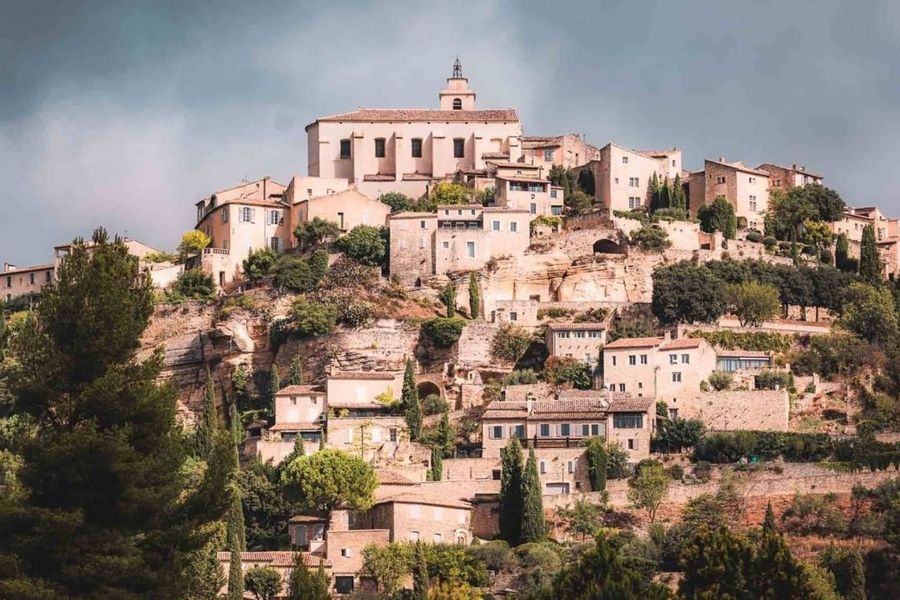
As you plan your trip, let me show you the must-see villages that made my personal ranking. I hope you’ll get to experience the beauty and unique atmosphere of the Luberon for yourself.
Why the Luberon Captivates: My Personal Experience
Rolling vineyards, medieval villages clinging to hillsides, and markets bursting with local flavors made the Luberon unforgettable for me.
Every visit brought something new—sometimes breathtaking walks, other times just quiet afternoons in shaded town squares.
A Brief Overview of Provence’s Heart
Nestled in southern France, the Luberon really is the beating heart of Provence. The region is famous for its limestone cliffs, green valleys, and a gentle pace that draws travelers and locals alike.
When I arrived, I noticed how the small villages—like Gordes and Roussillon—seemed untouched by time. Olive groves and lavender fields stretched beyond the old stone walls.
The golden afternoon light highlighted every detail. Locals are warm and often keen to share their stories or point out the best spot for cheese at the market.
For anyone looking for true Provençal charm, the Luberon offers it in abundance. The scenery and the people both make it special.
Traveling Through the Luberon: Story Highlights
On my first drive through the Luberon, I took the winding D2 road past Bonnieux and Lacoste. Each corner revealed a view better than the last.
I remember stopping for a picnic above Ménerbes, watching the patchwork of vineyards below. In Roussillon, the ochre cliffs glowed against bright blue skies.
I strolled the narrow lanes and ended with a coffee in the village square. Sunday markets in Isle-sur-la-Sorgue buzzed with energy—tables piled high with bread, olives, and honey.

My travels taught me that the best moments come unplanned. A quiet walk in Oppède-le-Vieux or a friendly chat with a winemaker made the Luberon more than just a pretty backdrop; it became a place full of memories and personal connections.
Best Times to Visit for Unforgettable Views
Spring and early summer showed me the Luberon at its finest. From late May to early July, the fields are lined with purple lavender and red poppies.
Days are sunny but not too hot, so it’s perfect for long walks. September brings a golden light and grape harvests in the vineyards.
Villages are less crowded, and the markets are full of seasonal produce like figs and truffles. Winter is quieter, giving the hilltop towns a calm beauty even if many cafes close for the season.
For photographers or anyone who loves soft natural light, sunrise and late afternoon offer the most stunning views. I’ve found that pausing at these times, whether on a quiet lane or a lookout point, gives the Luberon a magical, timeless feel.
7 Picture-Perfect Luberon Villages Ranked
Stone houses, red cliffs, and unforgettable views set these special villages apart. Some charm with their hilltop settings while others wow with colors and history around every corner.
1. Gordes: The Crown Jewel on the Hill
I remember my first glimpse of Gordes from the road below—the village seemed to float above the green valleys. Its white stone buildings catch the evening sun, making the whole hillside glow.
I wandered its narrow, winding streets lined with shady cypress trees and flowered balconies. The view alone is worth the trip, but there’s so much more.
Gordes sits near famous lavender fields, which bloom a deep purple in summer. Just outside the village, Les Bories—a collection of ancient stone huts—whisper stories from centuries past.
The weekly market is vibrant, filled with fresh produce, local cheese, and Provençal fabrics. Gordes feels timeless but is alive with art galleries and small cafes tucked into its stone walls.

Every turn offers a new photo op. It’s a favorite for travelers and photographers, and I totally get why.
2. Roussillon: Red Cliffs and Artistic Inspiration
Roussillon is like stepping onto a painter’s canvas. The ochre cliffs that surround the village burn bright red and orange, standing out against the green pines.
This color palette doesn’t just stay on the cliffs—it covers the walls, shutters, and even the streets themselves. Walking around, I spotted studios where artists painted landscapes inspired by the unique colors.
There’s a short ochre trail just outside the village, which I highly recommend for its wild, sculpted beauty. Roussillon has inspired countless painters, including Van Gogh, who found the area’s light and color irresistible.
Boutiques here sell art supplies, local crafts, and small jars of ochre pigment. The square bustles, especially in summer, but it always feels relaxed and creative.
3. Bonnieux: Timeless Charm and Sweeping Views
Bonnieux unfolds gently across the hillside, each street winding higher until you reach a centuries-old church at the very top. Climbing these stone steps, I paused for breath and took in the sweeping view across the Luberon valley.
On clear days, you can spot Mont Ventoux in the distance. Bonnieux is quieter than Gordes or Roussillon, but it has a classic charm all its own.
There are cozy bakeries, a beautiful old bridge, and small museums showcasing village life. The upper village offers terraces with space to sit, relax, and soak in the mountain air.
During summer, lavender fields bloom nearby, their scent drifting through the village at dusk. For me, Bonnieux is the perfect place to slow down, enjoy some fresh bread, and watch the sun set over Provence.
Discovering Village Life: Attractions and Activities
Every Luberon village brings its own history, flavors, and fun things to do. From old stone bridges and abbeys to lively local markets, there’s always something to see, taste, or try.
Unique Historical Landmarks Not to Miss
Some of the most memorable moments happen while exploring the Luberon’s historic monuments. In Gordes, I wandered up winding cobblestone lanes to the imposing Château de Gordes and took in its centuries-old towers and sweeping valley views.
Another highlight for me was the 2,000-year-old Pont Julien, a Roman stone bridge near Bonnieux. It’s still sturdy and offers a perfect picnic spot.
Just outside Gordes, the Senanque Abbey sits among lavender fields—walking around its peaceful grounds felt like stepping back into medieval times. Many villages have unique sites tucked away.
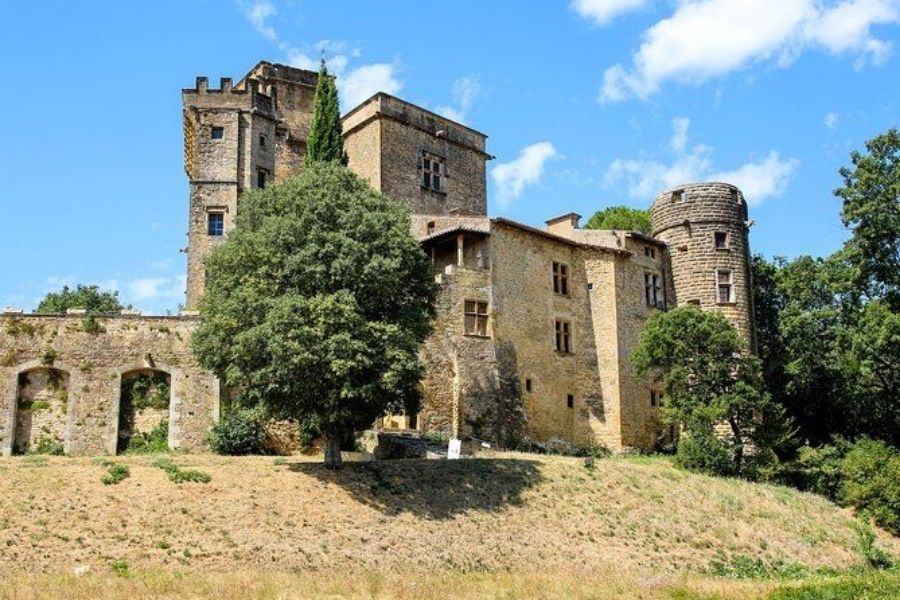
Roussillon draws artists with its vivid ochre cliffs, which glow in the sun. Antiquity meets everyday life in these villages, and it’s a thrill to stumble upon a centuries-old fountain or chapel on a quiet walk.
Exploring Markets and Artisan Shops
Luberon markets are the heartbeat of village life. Almost every day, I found a different market to explore, from Bonnieux’s Friday morning stalls to Lourmarin’s bustling Saturday market.
Tables overflow with fresh goat cheese, seasonal fruit, and lavender sachets. I love browsing local brocante and antique shops.
In Isle-sur-la-Sorgue, I spent hours discovering vintage treasures—old postcards, pottery, even tiny keys from another era. These shops are everywhere, perfect for finding small gifts or souvenirs.
Artisan workshops deserve a visit, too. Potters, glassblowers, and painters often open their studios to visitors.
Watching them at work gave me a sense of the village’s creative spirit. I left with a hand-thrown mug as a reminder.
Hiking, Biking, and Outdoor Adventures
The Luberon is a dream for anyone who loves fresh air. I started my days with easy hikes on dusty trails that connect villages like Ménerbes and Lacoste.
These paths wind through vineyards, past stone farmhouses, and up gentle hills with wide views. Biking is popular here—I rented a bike in Bonnieux and enjoyed the quiet country roads.
There are routes for all skill levels, from gentle rides to steep climbs for more experienced cyclists. The scenery keeps you going, with fields of poppies and wild herbs at every turn.
If you like a challenge, hike up to the ruins above Oppède-le-Vieux or ride between tiny hamlets for a taste of adventure. Guided walking tours are also available if you want local stories along the way.
Vineyard Visits and Tasting Tours
No trip here is complete without tasting the region’s famous wines. I joined a vineyard tour near Lourmarin and learned how local rosés and reds are made.
Many domaines and caves (wineries) open their doors for tastings and show you traditional methods. Some of my favorite stops were family-run vineyards where owners pour tastings and share stories about their wine and land.
You can try everything from light rosé to bold reds typical of the Luberon AOC appellation. Many vineyards offer simple, rustic meals with their own olive oil and local bread.
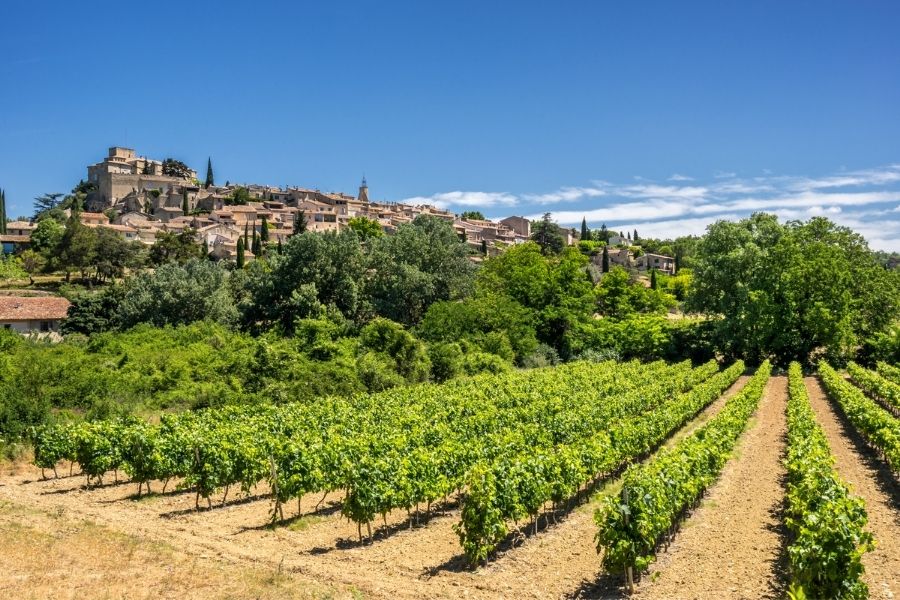
For anyone who enjoys food and wine, pairing a tasting tour with village sightseeing is one of the best experiences in the region.
Where to Eat, Stay, and Savor: Practical Village Travel Guide
Exploring the Luberon is about more than just pretty villages and sweeping views. Where I dined, slept, and how I interacted with locals shaped the trip just as much as the sun-soaked landscapes.
Top Restaurants and Culinary Experiences
Eating in the Luberon is a treat for all the senses. In Lourmarin, breakfast at Café Gaby felt like joining the neighborhood, with fresh croissants and coffee served at a sun-dappled terrace.
When lunchtime rolled around, Gina Café became my go-to for a homemade, hearty French lunch—think local cheeses and fresh produce. Dinner was always special.
I’ll never forget the rustic flavors at Le Moulin de Lourmarin, perfect for celebrating or enjoying a quiet evening. Over in Gordes, La Bastide de Pierres stood out for its Italian-inspired menu and warm ambiance.
For a memorable splurge, dining at the elegant Bastide de Gordes mixed Provençal flavors with views to match. Roussillon offered cozy bistros tucked among ochre-colored streets, with Bacheto in particular making an impression with its seasonal ingredients.
Be sure to make lunch and dinner reservations, especially during July and August when spots fill up quickly.
Charming Accommodations in the Luberon
From quaint guesthouses to elegant hotels, the Luberon has a range of places to rest. Staying in a traditional “bastide” (country house) felt both authentic and comfortable.
In Gordes, Bastide de Gordes amazed me with its luxury, spa, and hilltop pool overlooking the valley—ideal for those wanting a treat. For something more low-key, bed-and-breakfasts in Menerbes and Ansouis offered a chance to chat with friendly hosts over homemade jams in the morning.
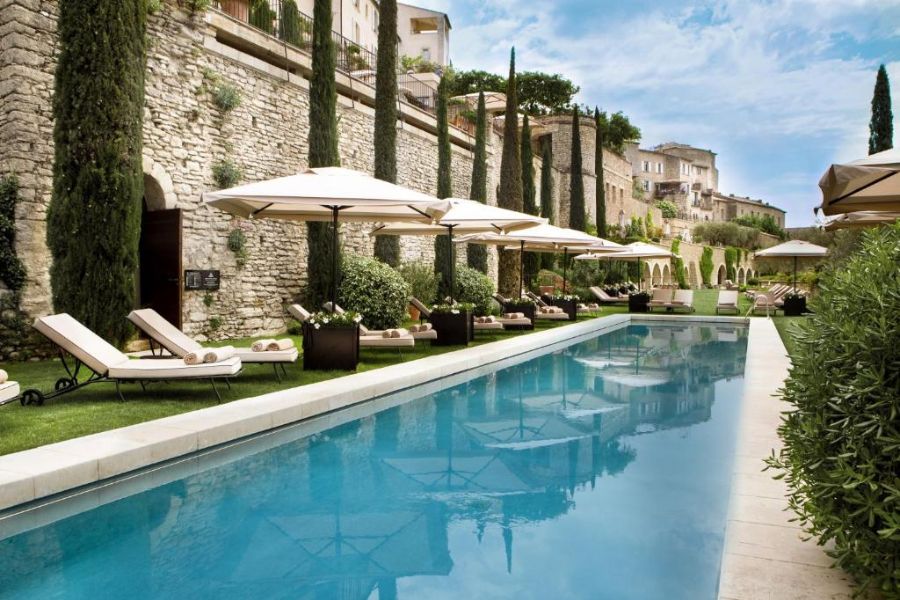
La Bastide St. Victor in Lourmarin provided a peaceful garden setting away from the crowds. Many accommodations book out months in advance, especially during festivals and lavender season, so planning is key.
Health, Safety, and Local Etiquette
I always felt safe traveling in the Luberon villages, even when wandering after dark or exploring narrow winding roads. Most villages are walkable, and doctors or pharmacies are usually easy to find if needed.
I pack basic medicines just in case, since rural pharmacies close early on Sundays. Respecting local customs goes a long way.
A friendly “Bonjour” when entering a shop or restaurant makes a real difference. Dress is casual but neat—think sundresses, linen shirts, and closed-toe shoes for cobblestone streets.
Tipping in restaurants isn’t required, but I usually leave a euro or two for good service. Markets and village fêtes are lively but safe—just watch your bags in crowds.
The slower pace is part of the Luberon charm, so I learned to relax and soak it all in.
Planning Your Luberon Escape: Tips and Resources
When I first decided to explore the Luberon, I honestly wondered how I’d get around, book good tours, and squeeze in a few nearby adventures. Sorting out bookings, public transport, and great spots for day trips takes some digging—but with the right info, it’s way less stressful.
How to Book Tours and Secure Refunds
Booking tours in the Luberon usually goes smoothly if you stick with trusted websites or pop into a local tourist office. I’ve had good luck with Viator and GetYourGuide for things like walking tours, wine tastings, and day trips.
Most companies post their refund policies clearly, but it’s smart to double-check before you hit “book.” I always look closely at cancellation terms. Some tours let you cancel for a full refund 24-48 hours before the event, while others keep part of your money if you’re late to cancel.
I set calendar reminders in case my plans change—forgetting would be a headache. When I booked a foodie tour in Gordes, I got instant confirmation and an email with a cancellation link. If things go sideways, reach out to the provider right away.
For a little extra security, I use a credit card. That way, I’ve got some backup if something goes wrong.
Pro tip: Local tourist offices sometimes know about last-minute openings or guides you won’t find online. If you arrive without much planned, just stop in and ask.
Public Transportation and Getting Around
Getting around the Luberon without a car isn’t impossible, but it does take some planning. Regional buses run from Avignon, Aix-en-Provence, and Marseille to bigger villages like Apt or Cavaillon.
From those hubs, local buses can get you to places like Roussillon or Bonnieux. The catch? Schedules are pretty limited, especially on weekends.
I’ve taken SNCF trains into Avignon or Aix-en-Provence, then switched to buses. Here’s a handy reference:
| Departure City | Main Luberon Hub | Transport Type |
|---|---|---|
| Avignon | Cavaillon, Apt | Train + Bus |
| Aix-en-Provence | Apt | Direct Bus |
| Marseille | Cavaillon | Train + Bus |
Renting a car gives you the most freedom, especially if you want to hit up several villages or wander off the main roads. Some bike rental shops even have e-bikes, which adds a bit of fun for exploring smaller towns.
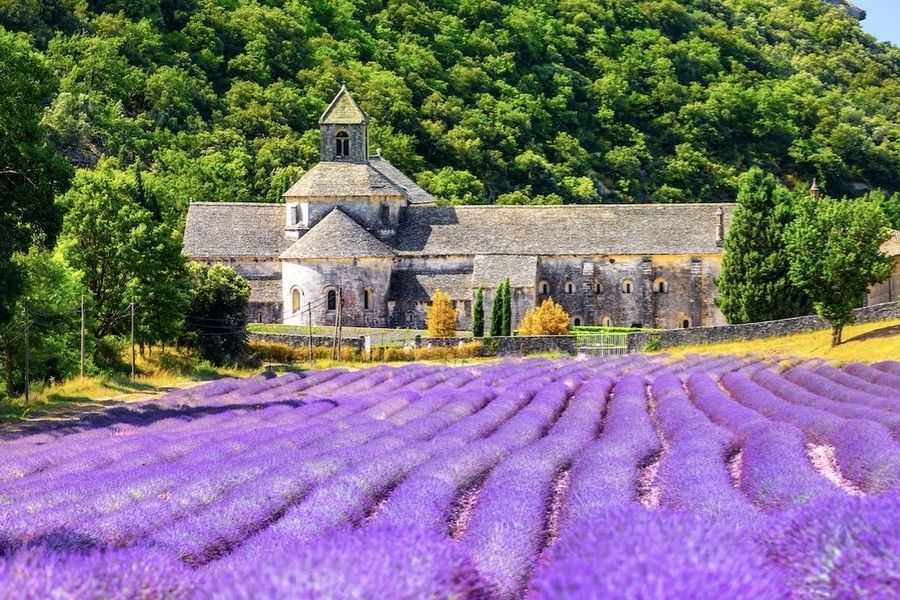
I suggest mapping out your route ahead of time and checking bus schedules online at LER or Zou! (the regional bus networks).
Day Trips to Nearby French Cities
One of the best things about staying in the Luberon? You can easily set out on unforgettable day trips.
The area sits close to lively cities and some truly beautiful natural spots.
When I crave art or a bit of Roman history, I drive to Arles. That Roman amphitheater always impresses, no matter how many times I visit.
Aix-en-Provence sits just over an hour away by car. I can’t resist its markets or those leafy, sun-dappled squares.
Avignon draws me in with the famous Palais des Papes and its walkable old town. If I’m in the mood for sea air, I’ll head to Cassis or the Calanques. Sometimes I just wander the cliffs, then grab fresh seafood at the port.
On days when I want less hustle, Uzès feels perfect with its medieval lanes. Hyères has palm trees and old stone walls—there’s something laid back about it.
If you like a little adventure, try driving up to Mont Ventoux for those sweeping views.
I usually check train and bus schedules the night before and try to hit the road early. That way, I can make the most of the day.

